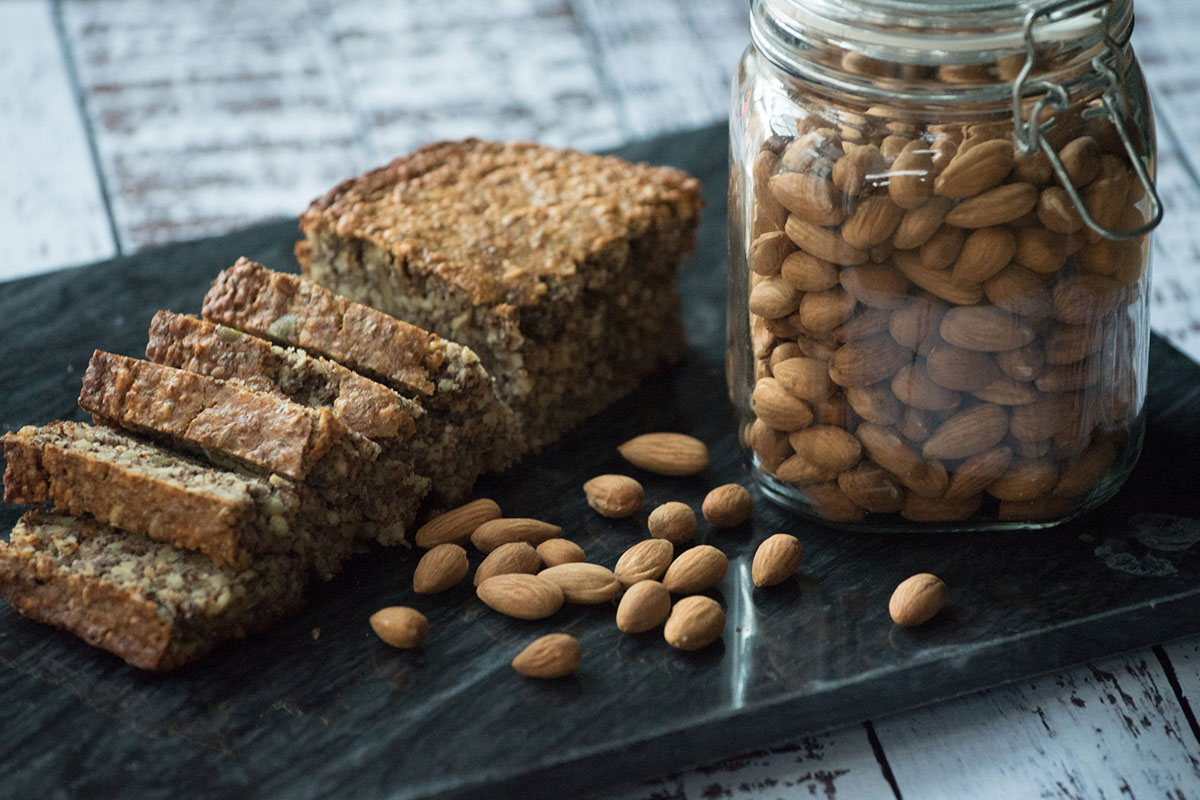Almonds are a powerhouse of a food. Packed with heart-healthy fats and Vitamin E, they can help lower cholesterol, balance your blood sugar and even lose weight. They are also highly versatile, shelf stable snacks that aren’t highly processed and can be taken on the go. They can be used to make almond milk, (which is a great alternative to milk or cream), almond butter (which is a tasty alternative to peanut butter (peanuts are typically high in mold), and you can even use almonds in baking as an alternative to traditional flour for gluten free baking. Scroll to the end of the article for recipes for all three!
With just a few ingredients and the right equipment, these are easier than you might think, and healthier, to make at home.
How to source your nuts:
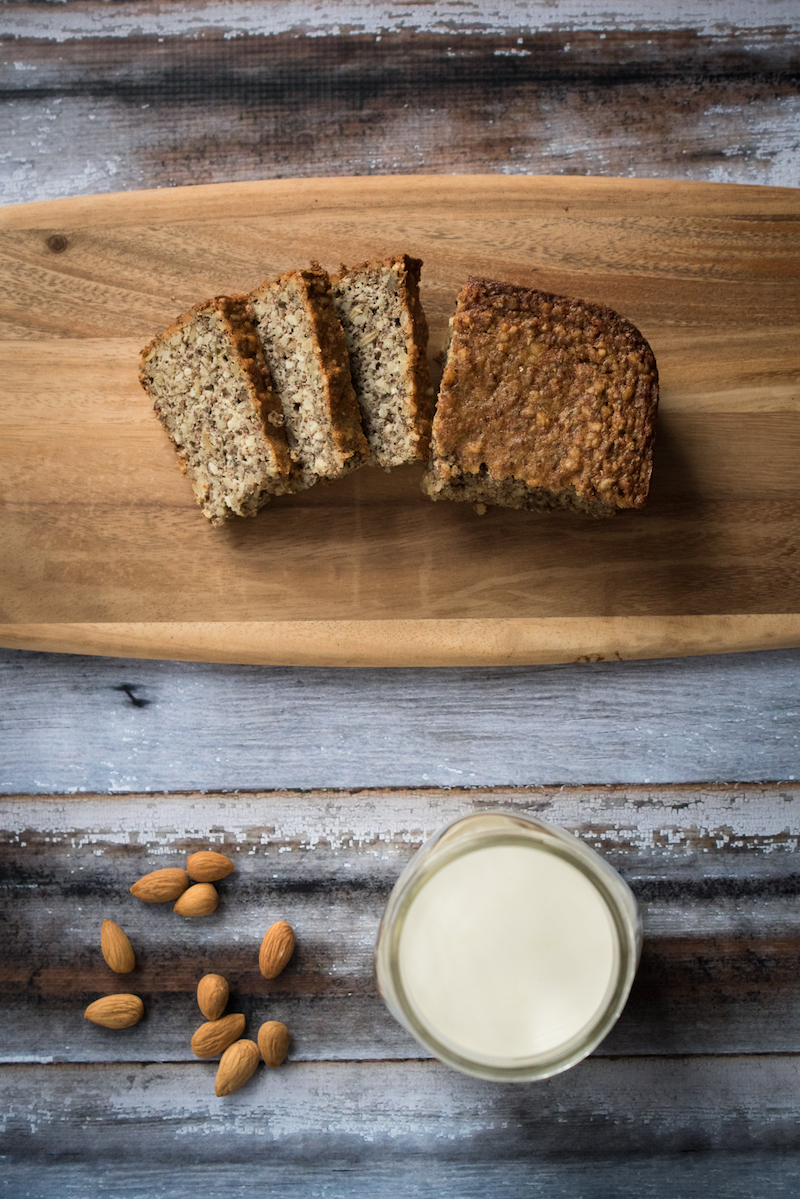
via Steph Jensen
Here are a few things that are important to keep in mind when purchasing your nuts.
What to look for:
- Buy organic when possible
- Buy raw, if possible (I personally buy mine online and in bulk directly from the farmer)
- Store in an airtight container and/or in the fridge for up to 6 months
- Soak and dehydrate your nuts (more below)
What to avoid:
- Avoid irradiated nuts (more below)
- Avoid dry roasted. This can damage their natural oils and they are often roasted in unhealthy oils.
Some nuts, seeds, and spices have gone through a process called irradiation, which kills off harmful bacteria but also destroys much of the vitamin content, produces a number of toxic byproducts, and can be carcinogenic, so be sure to steer clear of irradiated nuts. It’ll say on the package “treated by irradiation.”
Soaking Your Nuts
Most nuts, grains, and legumes contain something called phytic acid. Not only can this cause digestive upset for many, but can also bind to and deplete important minerals including magnesium (which can cause problems from muscle cramping to PMS), zinc (important for the immune system and reproduction), iron, and calcium (which can cause bone loss). Almonds are one of the highest phytic acid containing foods, but thankfully, there’s a way to remove most of the phytic acid, and that is to soak them.
Soaking nuts, grains, and legumes has been practiced for hundreds of years by many different cultures. Soaking also increases digestibility, enzyme levels, and B vitamins.
To soak your nuts:
- Place them in a bowl and cover with filtered water (with at least an inch on top).
- Add a tablespoon of an acid like apple cider vinegar or lemon juice and a tablespoon of sea salt.
- Let it sit for 8 hours and then rinse well.
- You can use them immediately or if you want to save for later, dehydrate for 24 hours or roast in the oven on the lowest setting for 2 or more hours to avoid mold growth. If making almond butter, roast the nuts first.
Once you have sourced and prepared your almonds, you can make many different things with them. Read below for recipes for almond milk, almond butter, and almond bread.
Almond Milk
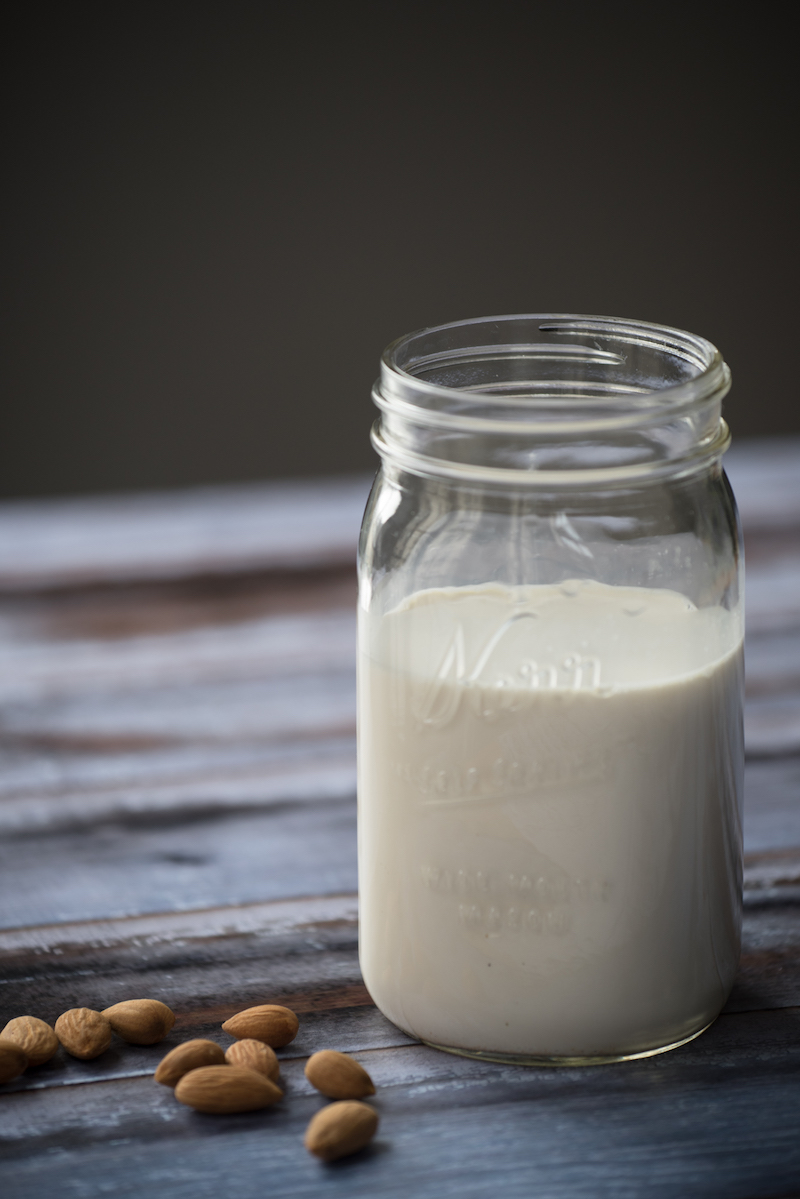
via Steph Jensen
Did you know that store bought almond milk can contain less than 1% almonds? Make this recipe at home so you know exactly what’s going into it!
Ingredients:
- 1 cup almonds
- 3-4 cup filtered water
- You can also sweeten it a tad by adding a few pitted dates
Directions:
Blend on high for several minutes. You can then strain the almond milk through a nut milk bag. This last step is not required but many do not like the texture. You can also use a paper towel placed inside of a strainer. Store in an airtight jar for up to 3 days in the refrigerator. Can also be frozen in ice cube trays for putting into smoothies.
Almond Milk Turmeric Latte
Ingredients:
- 2 cups almond milk
- 1 tsp turmeric
- 1/4 tsp cinnamon
- 1/4 tsp cardamon
- 1/4 tsp ground ginger
- 1/4 tsp pure vanilla extract
- 1/2 tsp maple syrup or dash of stevia
- Pinch of sea salt
- 1 Tbsp coconut oil (this helps activate the turmeric)
Directions:
Blend these ingredients and then heat on the stove. Alternatively, some blenders have a heat setting and will heat your liquid just by blending it (like the Vitamix).
Almond, Brazil Nut, Cashew, & Chia Seed Butter
Nut butter can be made using almost any combination of nuts and seeds. Peanut and almond butter are the most popular, but I like to use a mix of nuts and seeds for a unique taste. I also add chia seeds which adds a wonderful crunch.

via Steph Jensen
Ingredients:
- 1 cup almonds
- 1 cup brazil nuts
- 1 cup cashews
- 1 Tbsp chia seeds
- 1/2 tsp sea salt
Directions:
- Add the nuts to an 8 cup food processor and let it run. Do not add more than 3 cups of nuts.
- If the mixture gets stuck and nothing is moving, stop the machine and scrape down the sides using a spatula.
- After about 10 minutes, you should have a nice creamy butter that drips off your spoon. It may take a little bit of patience to get here, but it’ll happen!
- Once you have the right texture, then you can add the chia seeds and sea salt.
- Run the food processor for a few more minutes. Do not be tempted to add any sweeteners like honey or maple syrup as these will cause the mixture to gum up and you won’t be able to achieve the right consistency.
- Store in an airtight container in the refrigerator up to one week (if it lasts that long!).
Grain Free Almond Banana Bread
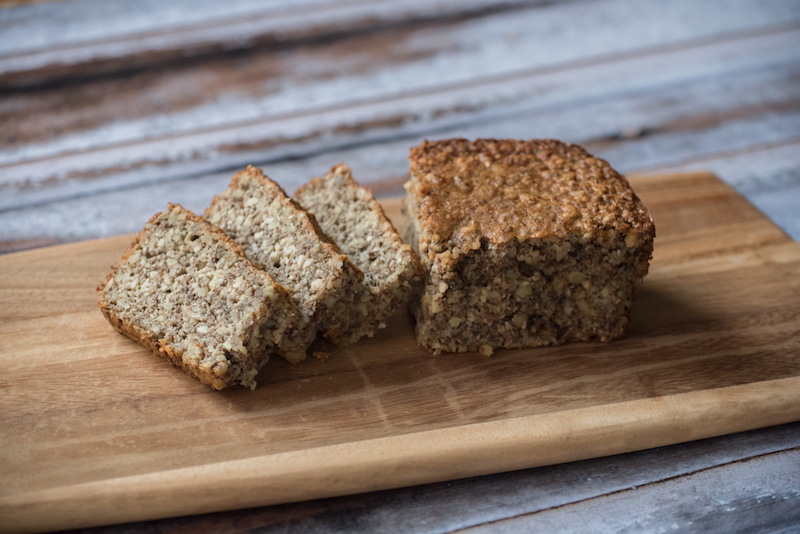
via Steph Jensen
Ingredients:
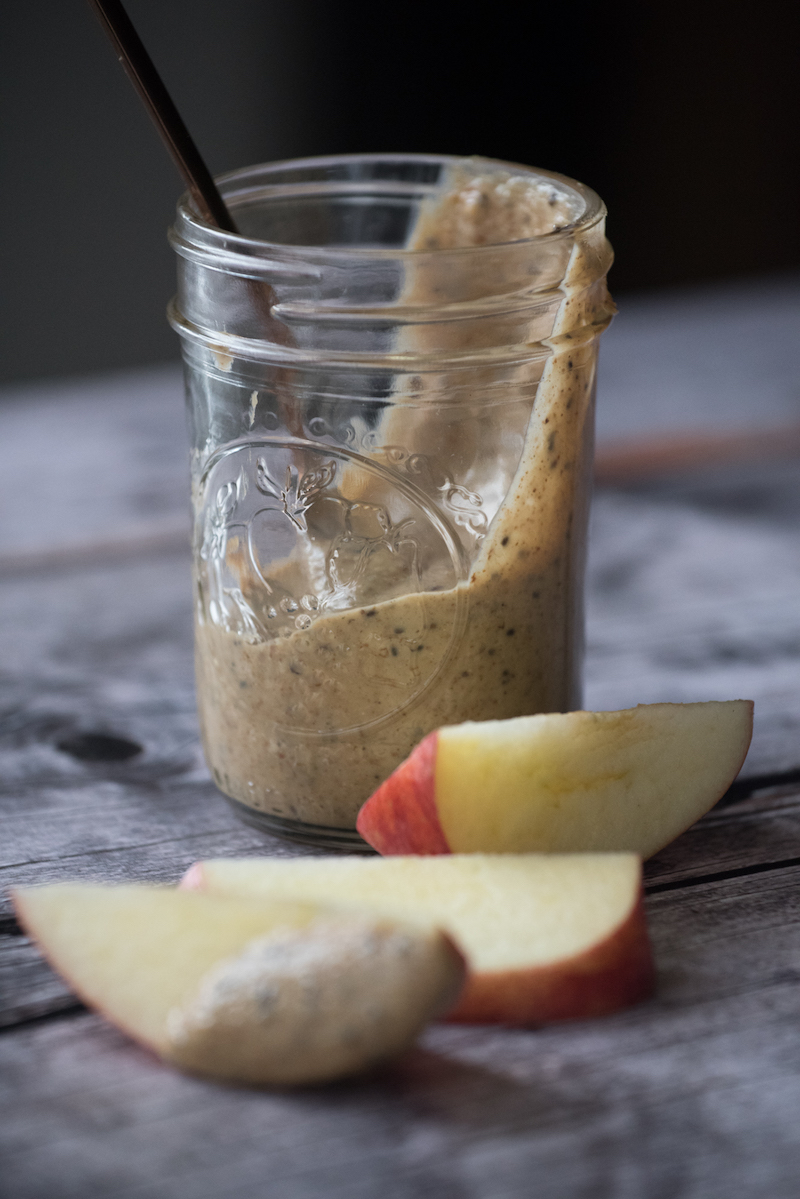
via Steph Jensen
- 2 1/2 cups whole raw almonds
- 1/4 cup arrowroot starch
- 2 1/4 tsp baking powder
- 1/2 tsp baking soda
- 1/2 tsp salt
- 1/4 cup pumpkin seeds
- 1/4 cup sunflower seeds
- 1/4 cup chia seeds
- 2 large eggs
- 1/2 cup coconut milk
- 1 Tbsp apple cider vinegar
- 2 Tbsp coconut oil
- 1 Tbsp maple syrup
- 2 bananas
Directions:
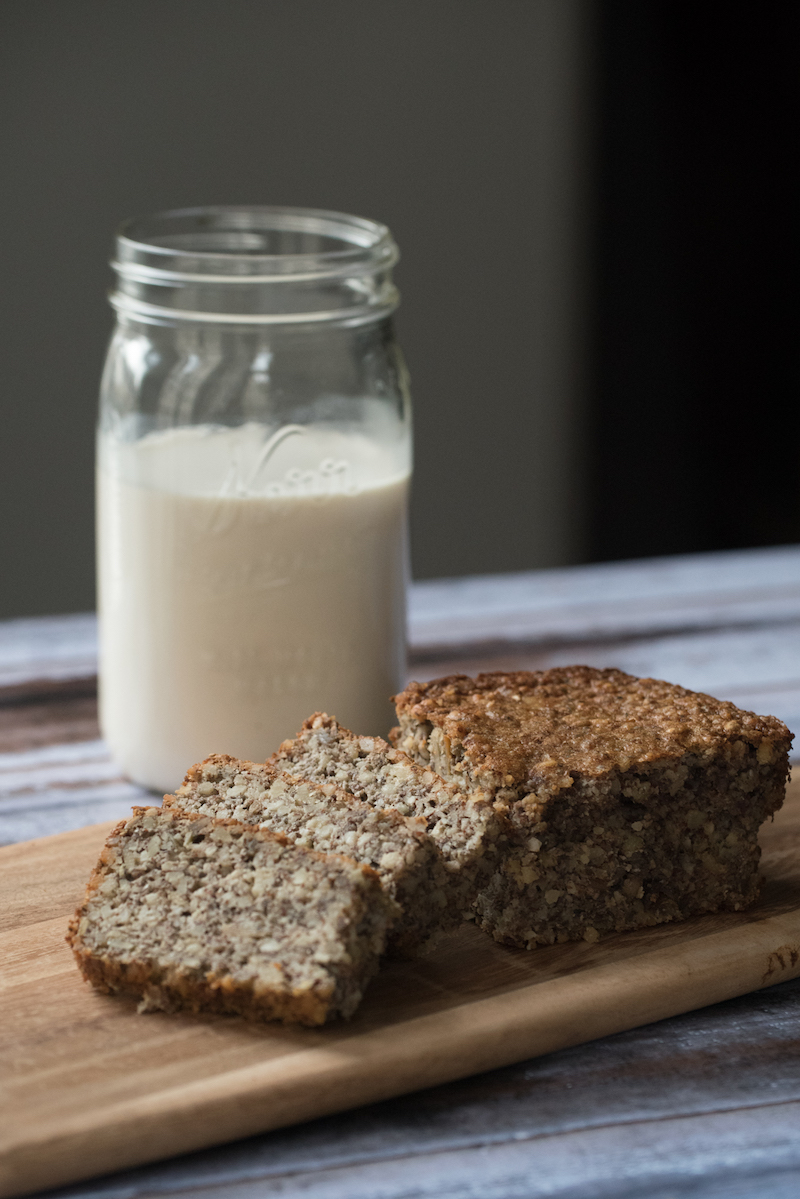
via Steph Jensen
- Heat the oven to 350 and grease a loaf pan (I use coconut oil)
- Place almonds in a food processor or coffee grinder and grind up until a fine meal.
- Mix all of the dry ingredients together (almond meal, arrowroot starch, baking powder, salt, pumpkin seeds, sunflower seeds, and chia seeds)
- In a separate bowl, mix all of the wet ingredients together (eggs, coconut milk, apple cider vinegar, coconut oil maple syrup, and banana). You can mix with a fork or use a blender to get an even consistency.
- Mix the dry and wet ingredients together.
- Pour into the greased pan.
- Bake for 50 – 60 minutes. When it’s done it’ll be firm on top and you can test the center by inserting a toothpick. If done, the toothpick will come out clean. If it’s still too soft in the center, put back in the oven for 5 minute increments until done.
- Allow it to cool for 5 minutes and then move from pan to a cooling rack.
- Store in the refrigerator.

